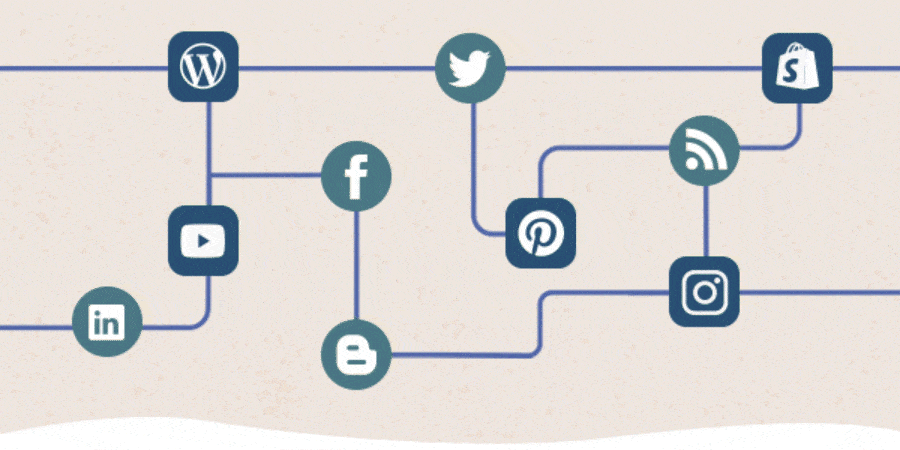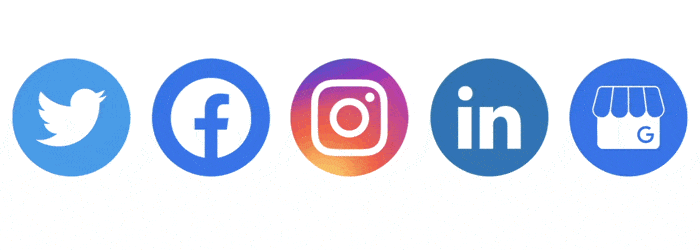
What is Social Media Marketing?
Social media marketing stands out as a highly effective branding method. While businesses that engage in it often see a significant return on investment (ROI), many still grapple with harnessing its full potential. Here are some of the essentials of this strategy, along with insights on how to employ it proficiently to achieve your business objectives.
Solidify Your Social Media Goals
Before launching any campaign, define your primary objective. Are you seeking brand awareness, or do you want to drive sales? Recognizing your goals can direct your focus and resources more efficiently.
Strategize Your Time Investment in Social Media
Understanding your objective also helps in allocating time to your social media pursuits. For those with abundant time, engaging with influencers might be a priority. Conversely, professionals with limited time might focus on posting consistently, be it weekly or daily.
Understand Your Target Audience
Every social network has its unique audience composition. For instance, while Facebook predominantly attracts women—who make up 77% of its user base in the US—Twitter leans more towards men, representing over 68% of its registered users. This demographic skew is essential to factor in, as it enables them to tailor their messages to the most receptive audience.
How Social Media Marketing Works
Arguably one of the most potent online promotional tools, social media marketing excels at relationship building. Social Media Examiner notes that 66% of marketers generate leads from social media after spending only six hours per week on social marketing. But success in this realm requires that you clearly understand its intricacies.
Key Parts of Successful Social Media Marketing Strategy
Social media marketing—which fuses digital marketing with strategic social media campaigns—involves creating content that’s tailored to attract potential customers. Platforms like Facebook, Pinterest, Twitter, and Instagram offer distinct opportunities. The primary advantage of social media marketing is the ability to target your audiences based on specific criteria, ranging from interests and demographics to behaviors and location. It all helps increase brand visibility, promote sales, and foster customer loyalty.

Why Use Automation?
Marketers often lean on automation for scheduling and managing social interactions. Here are some compelling reasons:
- Time Savings: Manual scheduling, considering variables like time zones and holidays, can be tedious. Automation tools streamline these processes from a centralized dashboard, saving you time.
- Consistency: A frequent challenge in social media is maintaining brand consistency. With automation, you can schedule regular posts, ensuring a uniform brand message, and even enabling you to build your brand persona.
- Results: Companies employing automation often witness heightened engagement compared to those who don’t. Whether your aim is audience growth or sales boost, automation can expedite goal achievement.
Key Features of Social Media Automation Platforms:
- Schedule Posts: This feature enables marketers to plan and queue posts for automatic publication at predetermined times. The advantage of this lies in its ability to maintain consistent brand presence without daily manual input. Scheduled posts ensure timely communication with followers, aligning with events or promotions, maximizing the relevance and impact of your social media content. It also allows marketers to tap into peak engagement times, regardless of their personal availability, extending content reach and engagement.
- Auto Posting with RSS Feeds: This feature lets brands publish fresh blog content automatically across social networks using RSS feeds. The benefit is twofold: brands can consistently share new content while also ensuring that followers on all platforms get immediate access to the latest information. This automation streamlines the content sharing process, ensuring immediate distribution and increased visibility.
- Content Recycling: This feature enables brands to repurpose old blog content for fresh engagement. In the fast-paced world of social media, quality content can be overlooked. Recycling allows for the reutilization of valuable content, maximizing its reach and ensuring that new followers get exposure to previously well-received posts. It enhances content lifespan and engagement potential.
- Content Search: This feature facilitates keyword search within content, ensuring better optimization and targeting. By refining content based on popular keywords, brands can increase their content’s visibility and relevance. This proactive approach ensures that content aligns with trending topics or discussions, maximizing its reach and engagement potential.
- Import Content: This feature enables brands to utilize third-party site content and repurpose it to fit their platform. By sourcing and adapting quality content, brands can offer diverse perspectives while maintaining consistent posting schedules. This not only enriches the content pool but also positions the brand as a curator of valuable information.
- Sync Your Accounts: This feature provides automatic updates across multiple social media platforms, ensuring seamless engagement. For brands with a presence on multiple platforms, this synchronization ensures that all their accounts reflect the latest updates, promotions, or news. It streamlines management, enhances consistency, and optimizes brand image across platforms.
- Hashtag Generator: By suggesting popular hashtags, this feature enhances post visibility. In the vast realm of social media, hashtags categorize and elevate content. Using trending or relevant hashtags can significantly boost a post’s reach, tapping into wider discussions or topics and increasing brand visibility.
- Analytics Integration: This feature syncs with tools like Google Analytics, providing data-driven insights. By offering a clear view of performance metrics, brands can understand what resonates with their audience, refine strategies, and optimize content. This data-centric approach ensures informed decision-making and maximized ROI.
Advantages of Social Media Automation:
- Time-Saving: Automation significantly reduces the manual effort required in repetitive tasks. By automating certain processes, marketers can redirect their focus towards strategic planning, content creation, and other high-value activities. This optimal utilization of time enhances productivity and ensures that brands maintain a proactive approach to their online presence.
- Efficiency: Automation tools streamline operations, ensuring that brands can manage multiple accounts, platforms, and campaigns with ease. This efficiency ensures consistent brand messaging, timely updates, and a comprehensive view of the brand’s online performance, leading to more strategic and impactful campaigns.
- Accuracy: Machines, unlike humans, are less prone to errors, especially in repetitive tasks. By automating certain processes, brands minimize the risk of mistakes such as missed posts or incorrect scheduling. This accuracy ensures that the brand’s online image remains professional and trustworthy.
- Extended Reach: Automation tools often come with features that optimize post timing, hashtags, and content recycling. These features ensure that content gets shared by users and reaches a wider audience demographic, tapping into new segments and maximizing brand visibility.
- Better ROI: Automation allows marketers to focus on high-impact tasks, such as strategy formulation and content creation. By ensuring efficient management and data-driven decisions, automation optimizes resource allocation, leading to improved returns on investment.

Core Elements of Social Media Marketing
Social media marketing is defined by several core pillars:
- Audience Targeting: This focuses on identifying and connecting with individuals who are interested in your offerings. By segmenting audiences based on various criteria, companies can use diverse strategies to communicate effectively.
- Brand Awareness: Crucial to building trust, brand recognition plays a pivotal role in influencing your prospects’ purchase decisions. Ensuring that your social media content aligns with your brand ethos is paramount.
- Customer Acquisition: Beyond merely advertising, you should explore diverse strategies—from offering free samples to hosting product giveaways—to attract potential buyers.
- Content Planning and Publishing: Successful social media management hinges on consistency, content quality, and appropriate timing. Social media automation and social media scheduling can be key tactics in a solid social media management strategy.
- Engagement and Listening: It’s crucial that you actively listen to customers and engage in meaningful interactions that enable you to foster a sense of trust and appreciation.
- Analytics and Reporting: Analytics let you understand user interaction and behavior. Tools like Google Tag Manager can provide comprehensive insights that help you gauge engagement rates and refine strategies based on real-time data.
Effective Social Media Marketing Strategies
Exploring Diverse Advertising Avenues
Social media advertising is an exceptional medium for reaching fresh and relevant audiences. You don’t need to monetize every post—just make sure each one adds value to your brand. Use tools like Facebook Insights to gauge the effectiveness and reach of your posts. Numerous advertising strategies exist on social media, including earned media, paid advertisements, and organic marketing. These strategies encompass actions like sharing valuable content, commenting on others’ posts, running sponsored or promoted posts, and utilizing display ads adjacent to pertinent news or articles.
Centering Content Around Buyer Personas
You can amplify your engagement by tailoring your content to a specific target market. For instance, a company that sells dog food should naturally focus on content related to dogs or puppies, thereby aligning with the interests of the target audience and boosting the opportunities for heightened engagement.
Fostering Relationships with Influencers
Influencer marketing can be a potent form of online marketing. It helps you liaison with influential individuals within your industry or community, offering substantial credibility and expanded reach for your brand, given the influencer’s extensive social presence.
Contributing Value Through Content and Engagement
You should make sure your comments and content contribute substantively to conversations and discussions on social platforms. Responsive and insightful engagement doesn’t just build trust with your audience—it also encourages recurrent interactions and engagement with your future content.
Emphasizing Customer Service
Maintaining consistency in your business profile across various platforms lets you ensure exposure of your logos, bios, and URLs. You can use a social profile scheduler to maintain regular posts and ensure your audience consistently sees fresh and relevant content.
Leveraging Sticky Content
“Sticky content” refers to content that captures and retains audience attention, prompting engagement, reading, and sharing. Such content—predominant on platforms like Facebook, Twitter, LinkedIn, and Instagram—serves as a magnet for audience attention, keeping them engaged with its relevance and interest. You can harness this strategy to enhance your brand’s attraction and retention of potential customers, with a majority of consumers expressing a preference for engaging stories over straightforward product advertisements.

Social Media Marketing Platforms
Facebook – With over two billion daily users, Facebook stands as the largest social media platform worldwide. Predominantly used by Gen Xers and Millennials, this platform serves as a hub for connecting with loved ones. Marketers have made it an essential medium for directly engaging with customers.
Instagram – Boasting over two billion monthly active users, Instagram ranks second after Facebook in terms of popularity. Known primarily for photo and video sharing, Instagram differentiates itself from Facebook by its more visual-centric approach. Though both platforms have been intertwined since Facebook acquired Instagram in 2012, Instagram’s focus remains on visual content, which sometimes limits marketing control.
Snapchat – Also under Facebook’s umbrella, Snapchat’s main draw is its ephemeral picture and video sharing through “snaps.” Since its 2011 launch, it’s amassed nearly 400 million daily active users.
LinkedIn – This platform caters to professionals who seek connections in the business world. Initially centered around job searches, it now helps people discover business products and services.
Pinterest – An image-driven platform, Pinterest enables users to pin favorite web images to virtual boards, showcasing interests and inspirations.
X / Twitter – As a microblogging site, Twitter allows users to share brief messages (280-character tweets). Rising to prominence during the 2007 South by Southwest Interactive conference, it now has over 237 million monetizable daily active user accounts.
Tumblr – Launched in 2007, Tumblr acts as a blogging and microblogging platform akin to a more youthful version of WordPress.
Reddit – Established in 2005, Reddit serves as a diverse forum for discussions, and is often dubbed the “front page of the internet.”
WhatsApp Messenger – This messaging app, developed by Facebook, has grown to be a prime instant messaging tool, handling over 100 billion messages daily as of last estimate in 2020.
Social Media Marketing for Businesses
Whether through paid advertising or organic posting, businesses leverage social media marketing to reach both prospective and current customers. Its advantages include:
- User-friendliness
- Online presence control
- Ideal customer targeting
- Enhanced product visibility
- Effective customer support
- Cost-efficient approaches
- Database growth
- High ROI
- Swift responses
- Real-time personalized communication
- Collaborative marketing team involvement
Boosting Website Traffic
While many brands gravitate towards Facebook ads, alternative traffic sources exist. In fact, up to 10% of web traffic stems from platforms like Twitter, Instagram, Pinterest, and LinkedIn. With the average individual spending three hours daily on social networks, the potential for traffic growth is evident. Tactics you can use include:
- Using hashtags
- Promoting posts via influencers
- Investing in paid ads
- Blogging
- Email marketing.
The Importance Of Social Media Marketing Campaigns
Social media marketing lets you interact with consumers, fostering mutual understanding and building robust relationships. Lots of myths still surround social media marketing, including the perception that costs and time spent outweigh the return on investment. One of the keys to social media marketing is that you can create strategies that cater to different industries and budgets.
Brands Need To Be Present On Social Media Platforms
By 2024, the number of global social media users is projected to surpass five billion. Thus, leveraging platforms like Facebook, Twitter, and LinkedIn has become imperative for businesses—not just for product promotion, but also community-building and data-driven decision-making.
Increase Brand Awareness
Engaging with an audience on social media can significantly amplify the visibility of and loyalty to your brand. Tactics like humorous content, particularly memes, sees higher sharing rates, and brands can also use platforms for product or service improvement via user feedback.
Viral Marketing and Social Media
According to Hubspot VP Platform Ecosystem Scott Brinker, social media marketing is about building customer connections rather than merely selling. Creating share-worthy content and engaging with your followers is key. Segmentation and targeting based on various factors, including behavior and demographics, further enhance the efficacy.
Effective Marketing Includes Interaction With Customers
Direct interactions on social media platforms can foster stronger customer relationships and lead to data-driven decision-making, improved customer service, and increased profitability. Moreover, these interactions make it easier for you to target specific consumer segments based on geography or purchasing intent.
Relevant Content Builds Stronger Relationships With Customers
Instead of merely driving sales, social media content should focus on cultivating meaningful customer connections. Because social media platforms are designed to enable direct customer interactions, it makes sense to use them to strengthen existing connections rather than trying to constantly establish brand new ones.
Examples of Social Media Strategies
Audience-targeted advertising, chatbots, and personalized experiences are just a few of the innovative strategies adopted by businesses for effective social media marketing.
Audience-Targeted Advertising
Audience-targeted advertising leverages demographic insights like age, gender, location, interests, behavior, and purchasing patterns to deliver tailored ads to specific groups. Suppose you’re a retailer for running shoes. By using this strategy, you could pinpoint ads to women aged 18–34 in select cities or to men aged 35–44 in another locale. The key advantage? You can ensure your marketing messages resonate with those most likely to be intrigued, thereby optimizing advertising spend and bypassing disinterested audiences.
Interactive Chatbots
Imagine having a digital assistant that can simulate human-like conversations. That’s a chatbot. Often incorporated into company websites or apps, these bots can pop up on any page and undertake tasks that range from answering product queries to booking appointments or gathering customer feedback. Retailers might employ them to provide insights about a range of products, while other sectors might leverage them to collect reviews and answer customer queries. The beauty of chatbots lies in offering customers a seamless interaction, often without requiring human intervention.
Personalized Experiences with Virtual Assistants
With the proliferation of mobile technology, virtual assistants have emerged as the next frontier in personalized digital interactions. Beyond basic functionalities like scheduling or music playback, these digital helpers have evolved to help manage intricate facets of daily life. From handling bill payments, to setting crucial reminders, to discovering local dining options, to even assisting in shopping, these personal assistants transform mundane tasks into seamless, digitized experiences.
The bottom line
Social media marketing encompasses the use of platforms like Facebook, Instagram, and Twitter to foster direct connections with clients. It’s not just about brand promotion but also engagement, feedback, and community building. Different definitions highlight its core essence: promoting brands on social networks to enhance visibility, engagement, and sales.
